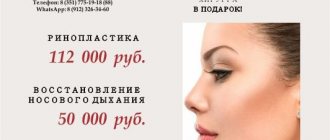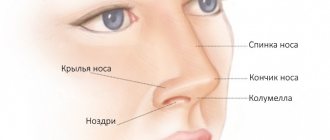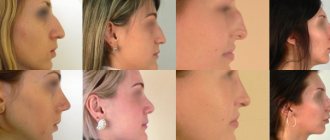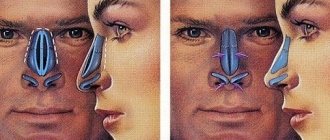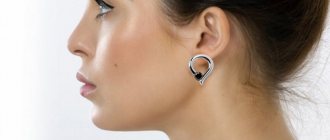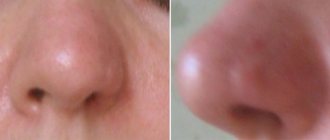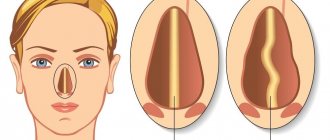Rhinoplasty in South Korea is a popular operation among both locals and foreigners.
Thanks to the highly qualified plastic surgeons, their knowledge of modern surgical techniques and non-surgical techniques, the patient receives exactly the result that he needs. As a rule, doctors working in specialized centers have not only excellent medical education received in their homeland, but also practical experience in European or American medical centers. They use low-traumatic techniques that allow you to achieve the desired shape and size of the nose as gently as possible, with a short recovery period. The popularity of rhinoplasty in Korea attracts up to 70,000 patients from abroad to the country every year; their reviews demonstrate the success of South Korean aesthetic medicine better than any numbers. Another important point that contributed to the popularity of this type of surgery is the price of rhinoplasty in South Korea. With the same high rates as in European clinics, prices for rhinoplasty in Korea are much lower than in European countries. Those clients who want to use the services of South Korean plastic surgeons can find out how rhinoplasty is performed in Korea and what the prices are by submitting a request to the website.
Materials in rhinoplasty
1. Autogenous
- Cartilaginous nasal septum Cartilage is taken from the nasal septum. This method is most often used for nasal tip surgery.
- Ear Cartilage Cartilage tissue is removed from the ear without leaving visible scars or changes in shape. This cartilage is usually curved and is used in the transformation of the tip of the nose.
- Costal cartilage Taken from the rib, leaving a small scar (2-3cm). This cartilage is larger and stronger. This method is usually used in cases where there is insufficient septal or auricular cartilage
- Subcutaneous fat (Dermo-fat) is taken from the thigh and does not leave visible scars. Subcutaneous fat has no side effects and can be used in nose bridge reshaping, nasal tip augmentation and revision surgery, but there is a risk of absorption.
2. Artificial
- Silicone is commonly used in bridge conversions as it retains its shape and is easily removed.
- Gortex is softer than silicone and does not create empty space around the implant, which causes complications.
3. Allogeneic tissues
- Allogeneic cartilage Tissue grafting from a donor is very safe and eliminates the need to take your own cartilage and leave a scar.
- AlloDerm A biological material that allows the body to assemble its own tissue during the regeneration process. It has excellent healing properties. Used in nasal tip plastic surgery and internal transformations.
- For Men The procedures used for men and women are the same, but the desired results are different. The surgeons have extensive experience working with male clients from all over the world.
Surgical nose job in Korea
In most cases, without surgical intervention, it is impossible for the patient to correct the shape of the nose or restore its respiratory function. Surgeons distinguish two methods of accessing tissue:
- closed - to eliminate minor cosmetic imperfections;
- open - for large-scale correction, involving a large amount of work.
Both types of surgery are performed under anesthesia. Depending on the complexity of the operation, the recovery period ranges from 1 to 3 weeks. The result is visible after 4-6 months.
It is necessary to take into account the fact that during this time the nose undergoes natural changes that can improve or worsen the result of rhinoplasty.
Correction of the nasal septum
Septoplasty is performed for medical and aesthetic reasons. The causes of a crooked nose may be an abnormal curvature of the septum, the formation of a ridge or a spine.
Options and cost of septoplasty:
| Classical | 5000-6000 $ |
| Endoscopic | 10 000 $ |
| Laser | 1 000-2000 $ |
| Radio wave | 800-1 500 $ |
| Ultrasonic | 900-1200 $ |
Change in nose length
The cost of operations ranges from $2000-5000 . For an excessively long nose, the following procedures are performed:
- grafting;
- cartilage excision;
- resection of the nasal dorsum;
- bone osteotomy;
- transformation of the base of the wings and the tip of the nose;
- Columella correction.
Several years after surgery, secondary plastic surgery may be required.
A small nose is corrected using the same grafting, autogenous, artificial or allogeneic tissues.
Changes in the length and shape of the nose. Photos BEFORE and AFTER
Plastic surgery of the tip of the nose
Problematic shapes of the tip of the nose are:
- hooked;
- overly elongated;
- pointed;
- forked;
- elongated downwards.
To obtain a new shape, the cartilage is excised and stitched in a new position. Cost of the operation: from $3000 to $5000 .
Nostril rhinoplasty
Rhinoplasty of nostrils and nose. Photos BEFORE and AFTER
To change the shape of the nostrils, several methods are used that allow you to cope with several problem areas at once.
Plastic surgery to narrow the base of the nose is considered the most difficult, because it is performed using external incisions that leave scars. How noticeable they will be after surgery depends on the skill of the surgeon. The price is 2000-6000$.
Correction of a hump
The pathology can be congenital or acquired. During the operation, the hump is removed, the bones are separated and moved. To achieve the desired result, plastic surgery of the tip and wings of the nose is sometimes required. The cost of the operation is high: 4500-5500$.
Rhinoplasty in South Korea is performed in specialized plastic surgery medical centers. High-tech equipment, high-quality service, quick recovery and guaranteed results at reasonable prices are the main advantages of this country.
Better to see once than hear a hundred times! Watch the video about the real story of a girl whose life was hindered by the shape of her nose. The video contains shots BEFORE and AFTER the operation. The operation was performed at the JW Plastic Surgery Clinic (Seoul, South Korea).
Rhinoplasty in South Korea. How it works?
Simple rhinoplasty
Also known as augmentation rhinoplasty. For people with low noses, a simple rhinoplasty can raise the bridge of the nose. This surgery is often done in conjunction with others to provide overall improvement.
Who is this procedure suitable for?
- Your nose bridge is low
- You are unhappy with your appearance
- Your sunglasses are on your cheeks
- You have a wide distance between your eyes
Description of the procedure
A simple rhinoplasty is done through a small incision inside the nose and the implant is inserted and set in place.
Flat nose
A flat nose is characteristic of many Asians. A low bridge and tip create the appearance of a flat face. A nose bridge augmentation and a nose job can be combined to give a more sophisticated look and restore harmony to your face.
Who is this procedure suitable for?
- Your nose bridge is low
- Your nose tip is low and wide
- You have large, flat features
- Would you like to have a taller nose?
Description of the procedure
Nasal bridge extension is performed using an implant or autogenous tissue. If necessary, nasal tip plastic surgery is performed using autogenous cartilage to widen and reshape the tip.
Roman nose
An aquiline nose (a nose with a hump) has protruding bone and cartilage at the bridge of the nose. This makes the face hard and masculine. Aquiline nose surgery smooths out the hump and straightens the nose.
Who is this procedure suitable for?
- You have large protruding bone and cartilage on your nose
- You have a hump due to injury
- You are unhappy with your hard expression
Description of the procedure
With minor violations of the nose line, the hump can be easily removed. However, in special cases, cartilage and bone must be removed and reconstructed to create the desired result. Often this procedure is done in combination with augmentation rhinoplasty and tip surgery (flat nose).
Nose deformity – Nose job (rhinoplasty): treatment in the best clinics in South Korea
South Korea has become one of the most popular destinations for foreign patients. Korean clinics are equipped with modern medical equipment and certified in accordance with international standards. At the same time, the cost of services is affordable for everyone who wants to improve their appearance.
Indications for rhinoplasty
Rhinoplasty is an operation to correct the shape and/or size of the nose, as well as the individual anatomical features of the structure of the upper respiratory tract. The procedure allows you to quickly acquire a nose of the desired shape and get rid of functional problems that interfere with normal breathing.
Indications for rhinoplasty may include:
- Nose deformity
- Nose too long or wide
- Aquiline nose"
- Thickened tip of the nose
- Asymmetry of the wings of the nose
- The need for nostril correction
- Congenital or acquired defects
Consultation with a plastic surgeon and diagnostics in Korea
Depending on the goals of rhinoplasty, the operation can be either exclusively aesthetic and minimally invasive, or more complex. Patients must obtain a preliminary consultation with a plastic surgeon and undergo clinical examinations, which include:
- General examination by a doctor - assessing the patient’s wishes and determining the possibilities of rhinoplasty. At this stage, the plastic surgeon informs the patient about rhinoplasty techniques, contraindications, recovery period, etc.
- Simulation of the result - Korean surgeons visualize the desired result before the operation using special computer programs. They also take photographs to evaluate the “before” and “after” results.
- Otolaryngological examination - determination by an otolaryngologist of the individual features of the structure of the nose to draw up a surgical plan.
- Laboratory tests - conducting general and biochemical tests to assess the general condition of the patient and exclude contraindications to surgery.
- Consultations of related specialists - assessment of the condition of other organs and systems, eliminating the negative impact of the operation on them.
Methods for performing nose surgery in Korea
There are several techniques for performing nose surgery:
- Open rhinoplasty is an operation during which a small incision is made on the column of the nose and in its cavity, the soft tissue is separated from the bone and sutures are applied. Prescribed when extensive correction of anatomical structures is necessary.
- Closed rhinoplasty is a plastic surgery for minor defects of the nose. Involves internal manipulation.
- A non-surgical technique is an injection procedure for correcting the shape of the nose using fillers.
Rehabilitation period after rhinoplasty in Korea
Rhinoplasty does not involve specific rehabilitation. The total recovery period varies from 10 days to 1 month. The duration of this period is influenced by the volume of surgical intervention and the individual characteristics of the patient. If the operation affected only soft tissues and cartilage, rehabilitation takes up to 1.5 weeks. If during the procedure all anatomical structures of the nose were corrected, recovery takes from 2 to 3 weeks. It is worth remembering that the final assessment of the results of rhinoplasty is carried out after a year.
The best clinics in South Korea
The best clinics are located in South Korea, whose doctors specialize in performing all existing corrective surgeries. Among the most famous Korean medical institutions are:
- Hanyang University Medical Center Seoul. The Department of Plastic and Reconstructive Surgery offers a wide range of aesthetic medicine services. All types of rhinoplasty and other facial plastic procedures are performed here. The clinic is one of the most famous in the country and has many international awards and certificates.
- Asan Medical Center Seoul offers all methods of correction of nasal defects and has achieved significant success in plastic surgery. The center received an award in the field of medical tourism for providing high-quality services to foreign patients.
- Samsung Medical Center Seoul. The Department of Adult and Pediatric Plastic Surgery has the best equipment in its arsenal. The center's specialists perform any corrective surgery on the face and provide a wide range of medical services at the highest level.
Organization of treatment in Korea
To travel to South Korea for nose correction, use the services of Booking Health, a partner of the best Korean clinics and the official organizer in the field of medical tourism.
Booking Health services include:
- Selection of a plastic surgery clinic, preparation of a diagnostic and treatment program
- Consultation with a doctor
- Sign up for convenient dates
- Providing favorable prices for services, without additional fees and coefficients for foreign patients
- Preparation of visa and documentation
- Insurance
- Organization of flight and accommodation
- Translation services
- Control of all stages of treatment
- Control of expenses and return of the remaining amount
- Purchase and delivery of prescribed medications
- Ensuring communication with the clinic after completion of treatment
To find out prices for rhinoplasty in Korea and more detailed information about plastic surgery services, leave a request on our website. Our consultant will contact you within 24 hours to clarify all questions.
A long nose
Typically, the nose appears long due to a long septum or drooping nasal tip. A long nose visually lengthens the face and disrupts overall harmony.
Who is this procedure suitable for?
- You have a drooping nose tip
- You have an elongated septum
- You are showing signs of aging
- You are dissatisfied with your appearance
- When you smile, the tip of your nose touches your upper lip
Description of the procedure
A long nose can be transformed by enhancing the ala cartilage, trimming the cartilaginous septum, or a combination of both. Specialized surgeons will determine the most appropriate surgical method depending on your individual circumstances.
Short nose
An upturned tip of the nose visually shortens the nose. In most cases, it also opens the nostrils.
Who is this procedure suitable for?
- You have prominent nostrils
- You have a short nose
- You have a raised nasal tip due to previous rhinoplasty
- You are dissatisfied with your appearance
Description of the procedure
Correction of the nasal tip can be done using various methods based on the use of autogenous cartilage. If the bridge of the nose is low, these methods can be combined with rhinoplasty.
Methods of performing rhinoplasty in Korea
Currently, rhinoplasty in Korea can be performed in the following ways:
- using fillers - harmless to the body, biocompatible fillers are injected under the skin. They allow you to even out the surface of the nose and give it volume. The effect of the procedure is short-lived and disappears after 6-18 months;
- using absorbable drugs - hormone-based drugs can reduce or increase tissue volume and achieve the desired effect. This method is usually carried out in several stages to reduce the risk of complications;
- using threads - installing threads through skin punctures helps to tighten the wings or the tip of the nose;
- with the help of surgery - can be open or closed. Rhinoplasty in Korea is usually performed in the second way, when the doctor performs the correction from the inside, through incisions in the nostrils. Scars after this operation are invisible
Crooked nose
A crooked nose is irregularly shaped or curved. This can lead to nasal obstruction, which makes breathing difficult. Also, a crooked nose may not have an aesthetic appearance.
Who is this procedure suitable for?
- You have a crooked or crooked nose
- You suffer from nasal congestion
- You have a displaced implant or cartilage after a previous operation
- You have an unsightly nose shape as a result of an accident
- You have asymmetrical nostrils
Description of the procedure
Reshaping of the nasal bone or cartilage is performed to correct a deviation or crooked nose. In most cases, the deviation is caused by a deviated nasal septum. Correcting the curvature is very important in order to prevent recurrence.
Wide nose
A wide nose can be caused by a wide bone structure of the nose, a wide tip of the nose, or wide nostrils. To solve this problem, osteotomy or narrowing of the base of the wings can be used. As a result, your nose becomes slimmer and more attractive.
Who is this procedure suitable for?
- You have a wide nose bridge
- You have wide or large nostrils
- You have a wide nose tip
- You have a visually flat face due to a wide nose
- You are dissatisfied with the appearance of your nose
Description of the procedure
There are various methods to reduce the width of the nose. The choice of method depends on the shape of the nose. Tapering the base of the wings can be used to reduce the size of the nostrils. Nasal tip surgery can make the tip slimmer. And changing the nasal bone will make your nose narrower and more beautiful.
How is nose correction performed?
There are two types of correction – non-surgical and surgical. The first is good because it does not involve cutting tissue, is bloodless, and does not require long rehabilitation. However, it also has a serious drawback - a temporary effect that can last about two years. Surgical correction is more reliable, but its price is higher and the recovery period is longer.
Nose correction without surgery
It can be performed to achieve symmetry of the nose, correct sunken wings of the nose, remove an unattractive, too prominent hump, and make the tip of the nose more attractive.
Dermal filler injections. Fillers (biocompatible fillers) are injected as precisely as possible, smoothing out imperfections and irregularities in the nose, adding volume where it is lacking. The main advantage of injections is that by the end of the day when the procedure was carried out, traces of the injections disappear, and after a few days the patient can go home and does not need rehabilitation. It is well suited for those who are afraid that changes in appearance will become irreversible: if you don’t like the new shape of the nose, you can consult a doctor to administer a special drug, after which on the second day your appearance will be the same as before the procedure.
Correction with Aptos threads. If a patient requests to tighten the wings of the nose or its tip, an innovative technique can be chosen to implant special threads under the skin that will tighten and create the required shape of the nose. There are no traces left after the procedure, the recovery period takes a few days.
Surgical correction of the shape of the nose
Performing plastic surgery allows you to eliminate obvious and significant defects, such as a deviated nasal septum (septoplasty), a nose that is too long or short, an unaesthetic tip of the nose, nostrils that are too large in size, and an unsightly hump of the nose. If the defects are minor, it is possible to perform endoscopic surgery - the most gentle type of intervention, with minimal blood loss and a shorter recovery period. If the defects are significant, open surgery is performed.
Endoscopic rhinoplasty. Instead of cutting through tissue, the area to be corrected is accessed through the nasal passages. In this case, the vessels and the septum between the nostrils are not injured. Tissue swelling after surgery is not as significant as with open rhinoplasty, blood loss is minimal, and recovery takes place in one to two weeks (depending on the type of correction). The endoscopic method can be used if it is necessary to correct the size of the nose, eliminate or reduce a hump, or correct the nasal septum.
Open rhinoplasty. A more serious surgical intervention is justified if it is necessary to eliminate excess tissue or, conversely, to increase it. For example, during plastic surgery of the tip of the nose, cartilage tissue is excised and then stitched to form the required configuration. Excision of excess tissue can be carried out with a conventional scalpel or less traumatic techniques - laser, high-frequency current, ultrasound. They help reduce blood loss and reduce the risk of infection. If it is necessary to increase the size of the nose or its individual sections, the patient’s own cartilage tissue taken from another part of the body (usually from the ear) is used. Synthetic implants are used much less frequently. After carrying out the necessary actions, self-absorbing sutures are applied, then a plaster cast is applied. The operation is performed using local anesthesia. The patient is under medical supervision for several days (up to 7 days). Swelling and hematomas disappear within a few weeks, and the final result is visible after 6-12 months.
Pear-shaped nose tip
A pear-shaped nose (potato nose) appears large and thick due to excess cartilage and soft tissue.
Who is this procedure suitable for?
- You have a wide or blunt nose tip
- You have a thickened tip of your nose
- You are dissatisfied with the shape of your nose tip
Description of the procedure
Nasal tip surgery is used to remove excess cartilage and create a straight nose. This surgery can be combined with others to significantly improve the appearance of your nose.
Plastic surgery in South Korea: nose rhinoplasty
For people planning a certain change in their appearance, the topic of how much rhinoplasty costs in Korea is very relevant, since most compatriots go there for medical help. This procedure is a surgical or non-surgical procedure to reshape the nose. This is exactly how many patients imagine it. It’s not a question of how much rhinoplasty costs in Korea, but a doctor will be able to answer it only after a thorough examination of the patient’s condition.
For a doctor, this is a complex operation that allows not only to change the appearance, but also to restore normal breathing through the nose, impaired as a result of injuries, inflammatory processes or congenital pathologies. Almost all plastic surgery in South Korea, the prices of which are among the most reasonable in the world, is based on the use of high-tech equipment. Combined with the skillful hands of experienced surgeons. This gives amazing results - Korean clinics are famous all over the world.
Indications and contraindications
For an operation such as rhinoplasty, there is a list of clear medical indications and contraindications. Such intervention is indicated in the following cases:
- Restoration of impaired nasal breathing or treatment of pathological processes in the paranasal sinuses.
- Correction of traumatic deformation of the nasal septum.
- Rhinoplasty of the nose is also performed to correct aesthetic irregularities in shape.
Since such an intervention is, first of all, a serious surgical operation, it has a number of contraindications - absolute and relative. The first group includes severe chronic pathologies in the stage of decompensation, the second group includes acute inflammation in the nasopharynx area.
It is important to understand that the best rhinoplasty is a rather relative concept, because patients and doctors evaluate the result differently. It is important for the doctor to preserve or restore the anatomically correct structure of the nasal septum so that the breathing process through the nose does not cause difficulties for the patient, and for the latter, the concept of the best rhinoplasty implies aesthetic perfection.
Changing the shape of the nose without surgery
In some cases, in order to change the shape of the nose, you can do without traditional surgery. For this purpose, non-surgical rhinoplasty is used to eliminate cosmetic defects in the shape of the nose. This option is not suitable in every case, since it serves only cosmetic purposes, allowing you to achieve the following effects:
- Changes in the shape of the tip of the nose.
- Asymmetry corrections.
- Elimination of excessive depression of the wings of the nose.
- Smoothing the hump on the back of the nose.
Any non-surgical rhinoplasty involves the use of fillers or special fillers that are completely harmless to the human body. Despite its relative simplicity, such an intervention has not become widespread due to the short duration of the effect, which can last from six months to a year and a half, after which the correction must be repeated.
Rhinoplasty operations
For many clients of Korean clinics, the best rhinoplasty is surgery. Despite the complexity and longer rehabilitation, it allows you to eliminate external defects and serious anatomical disorders that lead to failure in the respiratory system. It is worth noting that plastic surgery in South Korea has made a huge leap in recent years and today confidently competes with European hospitals that previously held leading positions in this field.
Read more about all types of nose surgeries and costs"
"Back
